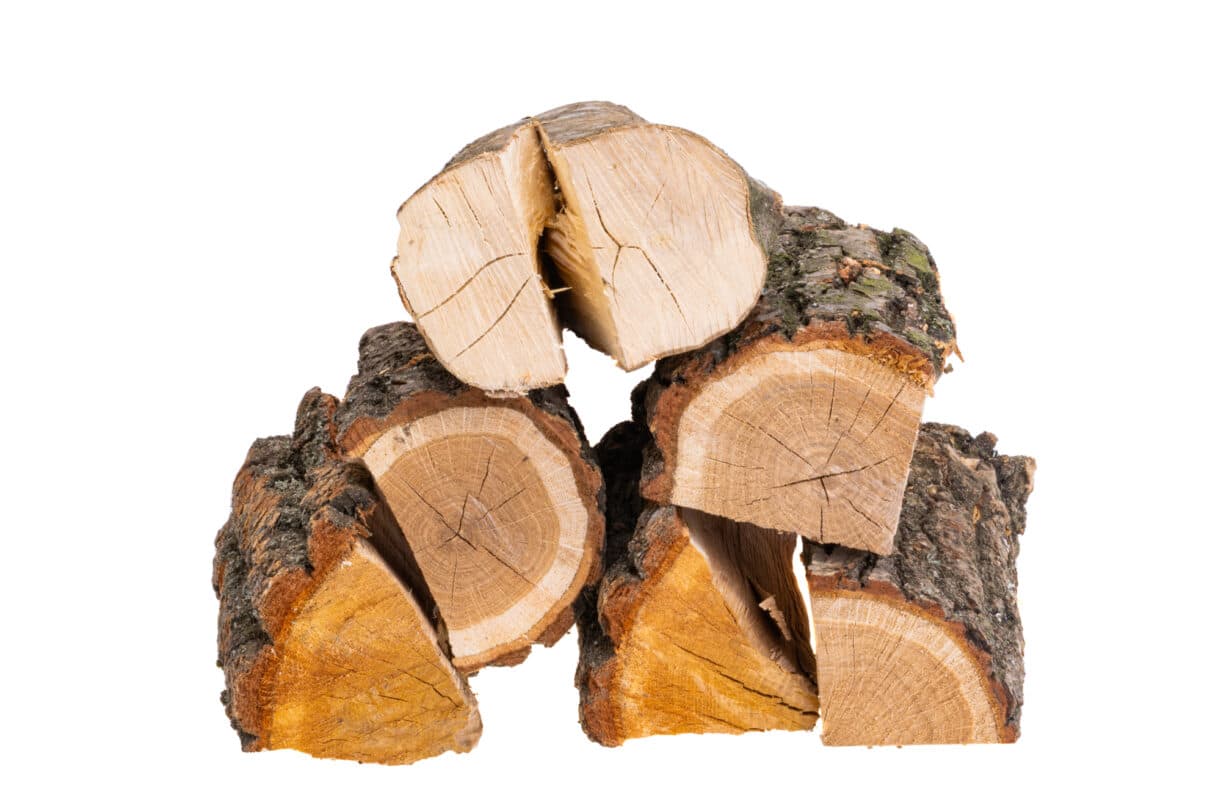Advantages using kiln-dried logs
There are several advantages to using kiln dried logs for heating and cooking purposes, including:
- Lower moisture content: Kiln drying reduces the moisture content of the logs to around 20%, which means they burn more efficiently and produce more heat.
- Cleaner burning: Kiln dried logs produce less smoke and soot than green or air-dried logs, which is better for both your chimney and the environment.
- Longer shelf life: Because they have a lower moisture content, kiln dried logs can be stored for longer periods of time without deteriorating or developing mold.
- Easier to light: Kiln dried logs are easier to light than green or air-dried logs, which means you’ll spend less time trying to get your fire going.
- Better value: While kiln dried logs may be slightly more expensive than other types of firewood, their higher heat output and longer burn time mean you’ll get more value for your money in the long run.
Overall, using kiln dried logs can result in a more efficient, cost-effective, and environmentally-friendly way to heat your home or cook with wood.
What happens during kiln-drying process?
During the kiln drying process, logs are placed in a large chamber or oven-like structure called a kiln. The kiln is heated to a high temperature, usually between 120 and 200 degrees Fahrenheit, and the humidity level is carefully controlled.
As the logs heat up, moisture inside them begins to evaporate and escape as steam. To prevent the logs from cracking or warping during this process, the humidity level inside the kiln is kept high for the first part of the drying cycle.
Once most of the moisture has been removed from the logs, typically after several days or weeks depending on their size and species, the humidity level inside the kiln is gradually lowered. This helps to further reduce any remaining moisture content in the wood.
The end result of this process is a set of dry, stable logs with a low moisture content that are ready to be used for heating or cooking purposes. Kiln dried logs are known for their high energy output and clean burn characteristics.
and use them in an efficient wood-burning stove or fireplace. This can help to reduce your carbon footprint and contribute to a more sustainable future.
What makes kiln-dried logs superior?
Kiln-dried logs are superior to regular air-dried logs because they have a much lower moisture content, typically around 20% or less, compared to the 30-60% moisture content of air-dried logs. This means that kiln-dried logs will burn more efficiently and produce more heat, as less energy is wasted burning off excess moisture. Additionally, kiln drying helps to kill any insects or fungi that may be present in the wood, reducing the risk of infestations or infections spreading. Kiln-dried logs are also easier to handle and store as they are lighter in weight and less likely to attract mold or mildew. Overall, using kiln-dried logs can result in a more efficient and environmentally friendly heating solution.
What is the burning time of kiln-dried logs?
The burning time of kiln-dried logs can vary depending on several factors, such as the type of wood, the size of the logs, and the conditions in which they are burned. Generally speaking, kiln-dried logs tend to burn hotter and longer than regular air-dried logs due to their lower moisture content. However, it’s difficult to provide an exact estimate for burning time without knowing more specific details about the logs in question.
What distinguishes kiln-dried logs from seasoned firewood?
Kiln-dried logs and seasoned firewood are both types of wood that are commonly used for burning fires, but they are produced through different methods. Kiln-dried logs are placed in a large oven, or kiln, where they are dried using high heat and low humidity until their moisture content is reduced to around 20%. This process usually takes several days to complete.
On the other hand, seasoned firewood is obtained by cutting down trees and allowing them to dry naturally over a period of months or even years. The wood is typically stacked in a dry, well-ventilated area and left to air out until its moisture content drops below 20%.
The main difference between these two types of wood is their moisture content. Kiln-dried logs have significantly lower moisture levels than seasoned firewood, which means they burn hotter and more efficiently. They also produce less smoke and creosote buildup in chimneys.
However, kiln-dried logs can be more expensive than seasoned firewood due to the additional cost of the drying process. Additionally, some people prefer the traditional look and feel of natural seasoned firewood over the more uniform appearance of kiln-dried logs.
Is it possible for kiln-dried logs to become moist or absorb water?
Yes, kiln-dried logs can get wet if they are exposed to moisture. While the drying process used in kilns removes most of the moisture from the wood, the logs can still absorb water if they are stored in a damp or humid environment. Additionally, if kiln-dried logs are left outside or exposed to rain or snow, they will absorb moisture and become wet.
It’s important to keep firewood dry for optimal burning performance. Wet firewood can be difficult to light and may produce more smoke and creosote buildup in chimneys. To prevent kiln-dried logs from getting wet, it’s recommended to store them in a dry, well-ventilated area that is protected from rain and snow. A covered storage shed or garage is ideal for keeping firewood dry.

